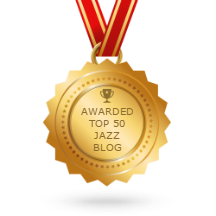
Got about a month's-worth of sidetracked there...So, back to the thread of whence cometh Bird, what he played that catapulted him onto the top of the jazz heap and the extent to which our perception of all that is colored by Parker's role as Tragic Hero.
If you're interested in this thread, you might want to check out my previous posts, but here's a precis: Unlike his more stable musical brother Diz, Parker's lifestyle was extreme, magnetic and polarizing. His drug habit and creative genius seemed to fuse in people's minds. Diz stretched the sheer technique of trumpet playing. Bird less so on alto. Parker's playing velocity was extreme, but matched by others. The range (high to low) in which he operated was 'normal.' However, Bird's tone was markedly different than that prevailing on the alto-sharper and more brilliant-and marked "modernism" for young players.
So, what's left to look at? The compositions and the improvisations themselves.
One way to look at the compositions is, again, to compare them to Diz's. Both broke from the past, but in different ways. The creation of new melodies over the harmony of older tunes is well known and in this, both are represented, with tunes like Groovin' High and Hot House (Diz); Donna Lee and KoKo (Bird). Both created melodies that are more complicated and chromatic than the originals. but the bulk of their compositions are very different.
Diz was a prime mover in bringing Afro-Cuban and other "exotic" influences into jazz. Compositions include Night In Tunisia, Tin Tin Deo and Manteca. He builds more minor and major-minor elements into the melodies. He also uses more contrasting sections, often going from the "exotic" section to a more straight ahead bridge. Diz also uses long tones held while harmonies shift underneath.
Bird's original tunes, when not based on standards harmony, are almost always 12-bars blues that build in more sophisticated chord changes. These include Billie's Bounce, Blues for Alice and Now's The Time. He also based several songs on Honeysuckle Rose; not a blues, but not far away. The lines that Bird writes tend to be involuted and/or convoluted. They often use _all_ the notes (9th, 11th, 13th, etc.) that he and Dizzy had found in the harmony. The sophistication lay in those melodies, not in any expansion of compositional form or structure. If you want a closer look and are up for a dense read, go to an analysis of Bird's compositions by John Miles
So, we've staked out a compositional territory (subject, naturally, to course corrections initiated by knowledgeable respondents) and next time, we'll look at the extent to which these compositional choices are reflected in improvisations.
By the way, I'm hoping there's something in here that is not just about jazz history, but which speaks to musicians now, who can find in this exploration some connection to their own creative process. Please pipe in about this.



3 comments:
I have spent countless hours in the Omni-book,.(transcribed Bird solos).
I've forgotten the tunes and never copped a Lick,.but just LOVE playing through his stuff,.out of tempo,.and changing the melodies or playing them at tempos Bird never would.
My main agenda is to "Open",.the Bass and Alto clarinets,.just get my fingers to fly..
Man, I hear you. I have an enormous pile of solos-a great Berigan solo book from the 30's, Downbeat transcriptions from the 40's, Brownie solos from a 50's book, and on and on. In some ways, being a good reader was a bit of a curse-you could enjoy the reading and not have to rely as much on your ears.
Brownie,..
every day I get a little closer to his level of chops,..the mark of what jazz trumpet can be,.(of which Freddie Hubbard is King),.
open Trumpet players like myself,Roy Campbell,and Hannibal can take that and then set it free..
Post a Comment